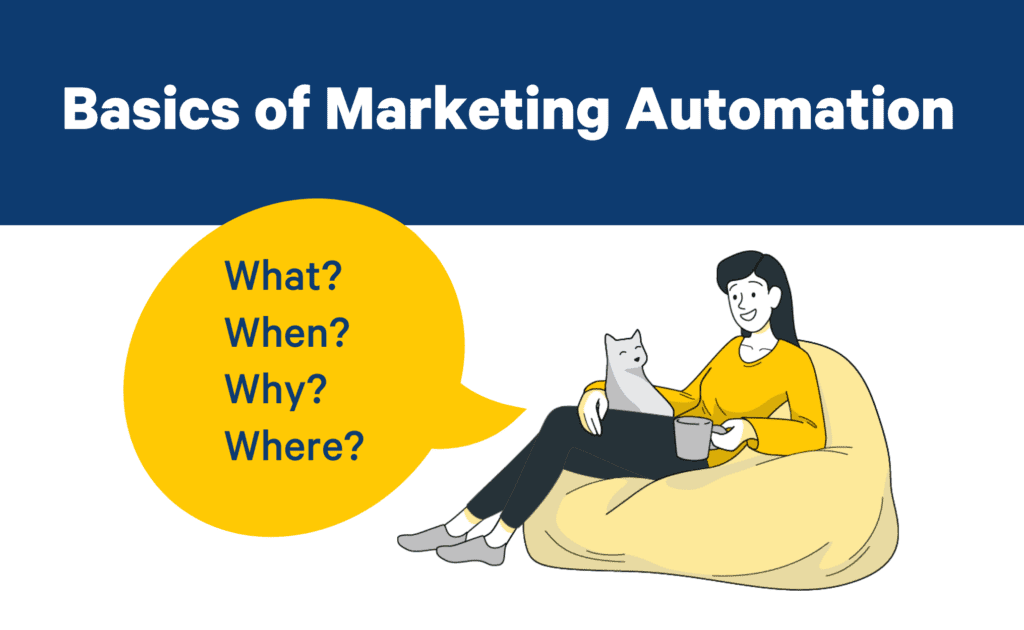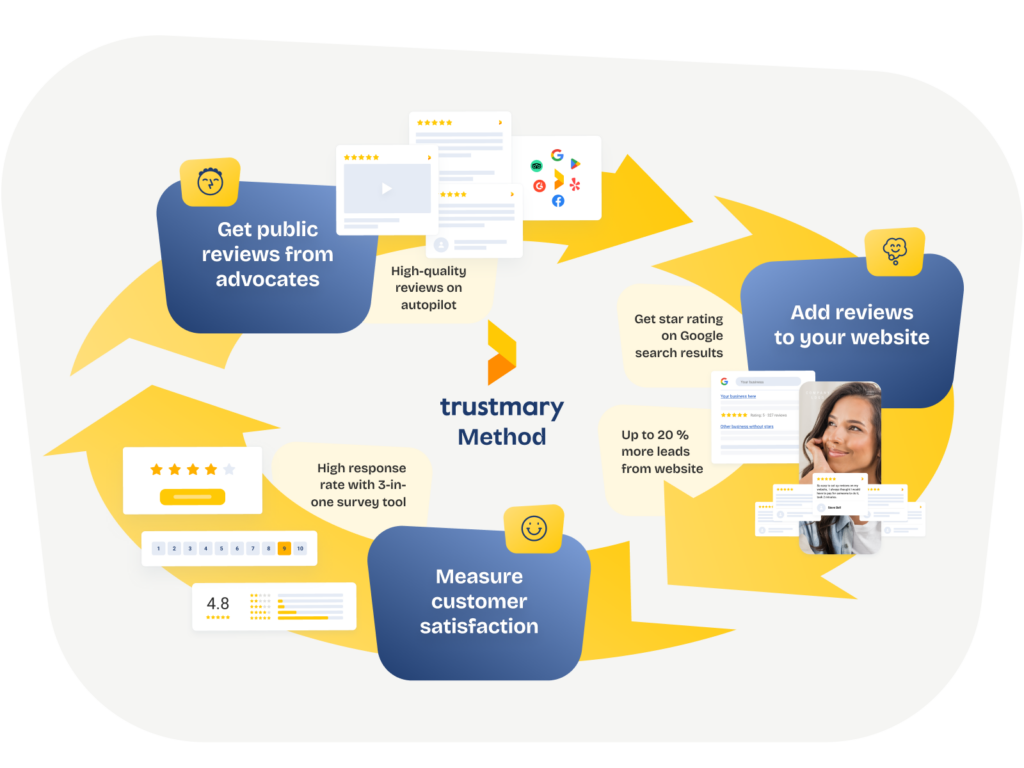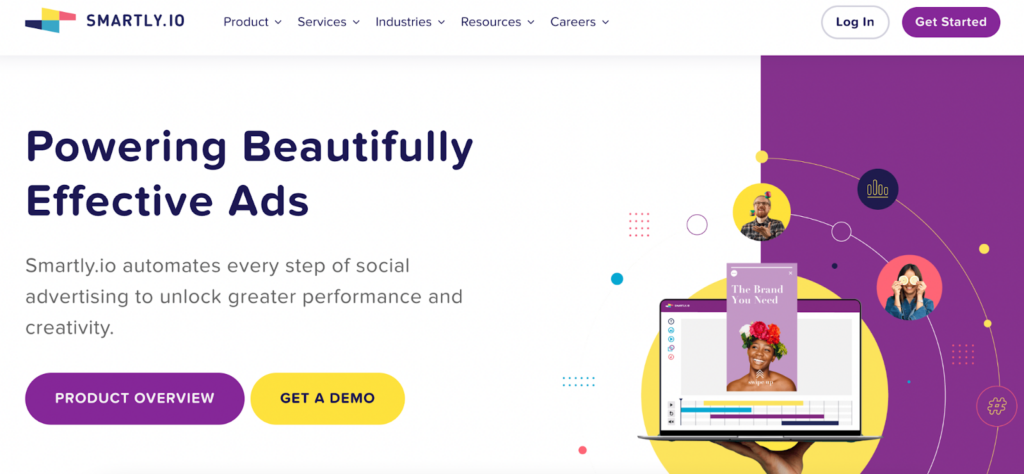Basics of Marketing Automation

Are you excited about all the possibilities that modern marketing automation tools could do to your marketing efforts?
I know, it sounds so cool and exciting!
However, before you rush into things, you need to understand the basics of marketing automation.
This blog helps you to understand what it really means to implement marketing automation, and what things you should consider before making the decision.
What Is Marketing Automation?
Marketing automation refers to tools and software that will help you to reduce the need for manual work during the marketing funnel.
People implement these tools to automate repetitive tasks, so that the marketing team can focus their efforts on something more lucrative.
Most marketing automation software tools are made to manage inbound marketing processes, like email campaigns and social media marketing.
…And What It Is Not
A common misconception is that once you purchase a marketing automation software, you will start seeing results immediately, and you never need to do anything again.
Don’t fall for this mistaken belief. Automated marketing workflows need to always be set up and configured, which is a process that requires knowledge and a plan.
Another thing that we hear often is that marketing automation and marketing AI (artificial intelligence) are regarded as synonyms. This is incorrect.
What is the difference between the two, then?
Artificial intelligence is able to reason, discover meaning, generalize, and learn. Thus its name: artificial intelligence.
Marketing automation is not quite as smart. Like stated above, an automated marketing process needs configuration.
It requires a human to first decide what it must do and set up the rules, after which it can start performing the tasks independently.
However, marketing automation and marketing AI can peacefully coexist in a marketing software.
Importance of Marketing Automation Strategy
The goal in implementing marketing automations is usually to reduce repetitive tasks and minimize the manual human work.
However, the introduction of marketing automation rarely reduces the amount of work involved.
This is because people introduce marketing automations to a situation where there are no processes to automate. Someone has decided to implement automation even though there is no need for it.
If you really want to reduce the workload of marketing and sales teams, you can’t just shoot in the air and adapt an automation tool just because it looks cool.
You need an effective marketing automation strategy.
Hopefully this blog will help you recognize the needs for marketing automation and choose the right automation tools.
Marketing Tasks to Automate
Here are some repetitive tasks that you could automate, from gathering and scoring leads to lead nurturing and different touchpoints of the customer journey.
Customer Feedback and Testimonial Collection
This is one of the most repetitive tasks that your sales team faces on a daily basis.
Who has time for sending feedback surveys via email, when there are more pressing matters, like finding prospects or closing deals?
You might feel tempted to just not send the survey at all.
Luckily, there are tools with which you can automatically send feedback surveys to your clients, and get public testimonials to use in marketing campaigns.
Email Campaigns
You have a tight schedule, and you need to remember to send the weekly newsletter to your customer segment A, another email for your customer segment B, and also greet the new subscribers with a welcome letter.
Then, your meeting gets delayed 20 minutes, which causes you to be late from your next appointment, and the whole day spirals out of control.
In the evening, you realize that you forgot to send the newsletter! You messed up the sending schedule!
Well, maybe it is time to consider email marketing automation.
When you do that, you can set a sending schedule for each campaign that will run even if you get sick.
As long as you have material to send, you’re all good!
Some email marketing automation tools include features that help you send customized and relevant experiences for your leads based on their behavior.
Additionally, you can follow the campaign performance with the reporting tools that come with most marketing automation tools.
Social Media Management
Similarly to emails, you have a hard time keeping up with the schedule of social media posts. Also, you need to post on multiple platforms, and the content varies between different channels.
Social media automation helps you set publishing schedules ahead of time, and run the publications in the set schedule.
Depending on the tool, there can be additional features such as collective inbox for all your direct messages.
Some social media marketing software might even include AI features that help you plan personalized messaging and even content for the posts.
Lead Generation
Generating leads automatically means getting leads to submit their contact information without you having to be somehow present in the situation.
This can be done by creating compelling content that gets prospects to your website, and providing easy ways for your website visitors to give their contact details.
Try these lead generation tactics:
- Lead generation forms
- Lead generation chatbots
- Lead generation quiz
- Lead generation popups
Make sure you compare different lead generation chatbot alternatives properly, as many have hidden costs.
Lead Scoring
Trying to figure which leads are the most lucrative ones can be challenging if you have no tools whatsoever to analyze their behavior.
Using lead scoring tools lets you in on your prospective customer’s behavior. You can see how engaged they are, which can predict how willing they are to purchase.
This lets you plan your next steps better, and focus your efforts on people who are more likely to bring in some money, aka qualified leads.
Customer Relationship Management
Are you tracking how your customers are feeling about your products and services?
Do you have your customer data securely stored somewhere where relevant people can easily access it?
If yes, how do you do that? Hopefully not with post-it notes or Excel sheets, or worse, relying on your memory.
Customer Relationship Management systems are great for tracking how the customer journey of each customer is progressing.
You can also follow customer satisfaction if you use CRM smartly.
Additionally, CRM allows many possibilities for automated workflows if you integrate it to other marketing tools.
Reporting
You get snippets of marketing data from here and there, but seeing the big picture can be challenging.
Reporting automation tools can help you get a better understanding of how your marketing efforts are succeeding.
Better yet, if you adapt an AI marketing platform that can draw conclusions from a massive set of data and even predict future patterns, you have brought the reporting game to another level.
Marketing Automation Tools
When it comes to marketing automation, we mainly talk about certain marketing automation systems like Activecampaign, Hubspot or Marketo.
However, all systems that automate individual marketing processes, such as Hootsuite or its alternatives(social media posting), Smartly (FB paid advertising), Zapier (integrations), and Ahrefs (search engine tracking) could also be included.
Perhaps the most well-known marketing automation system is Hubspot, which has been sweeping the market in recent years.
Hubspot’s rise has also given rise to a huge variety of marketing automation systems like ActiveCampaign, Marketo, Pardot (SalesForce), Klaviyo, Mailchimp, SharpSpring, Drip, Infusionsoft, Oracle Eloqua and so on.
In the following sections I’ll introduce you to some well-known as well as less well-known marketing automation platforms.
Feedback Tools
1. Trustmary

With Trustmary, you can collect feedback, reviews, testimonials and video testimonials from your customers and showcase the results on your website.
The surveys are easy to create and customize with an intuitive survey editor.
When you integrate it with your CRM system like Pipedrive or HubSpot, you can create multifaceted automations and target the right surveys to the right customers.
2. Delighted
With Delighted, you can collect feedback from your customers and use AI-driven analytics and reporting.
You can customize the feedback surveys and send them automatically in multiple formats.
3. Retently
Retently is a feedback tool that allows you to send NPS, CSAT and CES surveys via email, pop-ups and messengers.
You can also segment your target audience and benchmark your survey results with your competitors.
Email Marketing Tools
1. ActiveCampaign
ActiveCampaign is one of the most well-known marketing tools for email marketing.
It allows you to target your customers with personalized email messages, nurture leads with automated messages, and offer insights about customers so you can convert them more easily.
2. Mailchimp
Mailchimp is an email marketing tool, but it also offers solutions for your landing pages and social media.
We recommend Mailchimp as a marketing platform for smaller online stores especially.
Trustmary can help you send surveys with Mailchimp!
3. Klaviyo
Klaviyo is an email and text message marketing platform that offers possibilities for personalized and automated messages.
You can schedule your marketing campaigns and track the ROI of your campaigns.
Social Media Tools
1. Hootsuite
Hootsuite is an extensive solution for your social media marketing and online reputation management.
You can create and schedule content, manage it on one platform, analyze performance and respond to comments from your audience.
2. Statusbrew

Statusbrew is also a tool like Hootsuite, helping manage social media and online engagements.
If you're hearing about Statusbrew for the first time, it's a good, modern, team-friendly software offering Hootsuite Enterprise-like features (approvals, saved replies, tags, automations, team reporting, etc) at a fair investment.
3. Smartly

Smartly is a marketing automation platform focusing on social media advertising.
You can create beautiful and creative campaigns that are targeted to your ideal customers on multiple platforms.
4. Buffer
Buffer lets you schedule your social media posts and effortlessly engage with your audience.
You can also use analytics to follow the performance of your posts.
Things to Consider before Implementing Marketing Automation
When planning your marketing automation strategy, you must consider the following aspects.
1. Volumes
The automation for small volumes is almost as useless as having no automation at all.
If your company has 100 leads, does it make sense to build a multi-step, great email automation when you can call each lead in a fraction of the time it takes to build the automation?
Small volumes also make it very difficult for you to make any data-based decisions, because with a sample of 100 people, you can forget statistical significance.
2. There are no processes to automate
The marketing processes for most companies are at a level where there is nothing to automate at all. This mainly stems from the fact that marketing does not have the resources to produce content in sufficient volume to require processes.
Marketing automation systems are largely ways to automate content distribution, and sometimes you seem to forget about the whole conversation that content does not just appear magically.
3. The systems are not free
The idea behind automating human work seems to be that it brings savings.
However, the systems themselves are not free. Take Hubspot’s cheapest package with marketing automation tools, for example: Professional – Starts at $ 740 per month.
And this package does not yet include the ability to create automations based on “custom events” on websites. This feature would then require an Enterprise Plan starting at € 2,944 per month.
Okay, cheaper options like ActiveCampaign can be found, and Hubspot also offers reasonable discounts.
In any case, systems cost just like human labor does, and sometimes human labor can be more cost effective.
4. Knowledge
Using marketing automation systems requires expertise, which again requires money. And while the industry is moving forward, finding the right talent is often a challenge.
Often, the implementation of marketing automation requires the involvement of an external consultant or partner agency.
Summarizing things to consider in marketing automation
The cost-effectiveness of marketing automation is not self-evident.
I recommend that you consider different scenarios, and really think about how much sales you need to make the investment in marketing automation profitable.
Based on that calculation, you can then ask a company that has already implemented a similar system before:
1) how much sales growth have they achieved with marketing automation, and
2) how accurately it can be proven to be due to marketing automation.
(Consultants and agencies may not be worth asking if you want objective information. Impartial testimonials will drive your buying process in a different way.)
When to Get Marketing Automation Tool for Content Marketing?
As a rule of thumb, you might want to start with content marketing first, and then start looking at what processes automation could help to bring marketing to the next level.
When it comes to content marketing, it’s important to keep in mind:
- Content production and its resources
- Content Distribution
- How to drive potential customers from content to sales (funnel)
First, content production needs to be fine-tuned so that relevant content is constantly posted.
After that, you have to think about how content distribution works, aka how people find your content. Social media, Search Engine Optimization, Email Marketing and so on.
Then, we’ll think about how to get those readers to purchase.
Of course, this process can also go the other way, as content readers are wasted if you can't convert them to sales. But it is difficult to make decisions based on data before that data is available.
When these 3 things are in order, or even at some level, it becomes clear what the marketing process is and how much a marketing automation system could benefit it.
In Summary of Marketing Automation
Marketing automation is a trendy term that has gained a major foothold in marketing circles.
However, it is not a good idea to get involved with every stroke, even if there is potential.
And I’m not saying that marketing automation would be completely silly. You just need to be smart when it comes to choosing the best marketing automation (or none) that also fits your overall marketing strategy.
Start small, follow your success, and base your decisions on facts.
You can also ask for help from other companies who are in the same situation as you.
What matters, however, is not what others do. Think about what you want to do, as long as you are considering all the pros and cons.
Further Reading
Here are some great resources that are worth checking out if you are planning to reduce your sales and marketing workload:
FAQ
What is marketing automation?
Marketing automation is a process where repetitive tasks of the marketing funnel are reduced with the help of different tools.
How does marketing automation work?
Marketing automation tools are different and use different systems. Oftentimes marketing automation needs to be configured by setting certain triggers that cause another event to start. Sometimes marketing automation works with the help of artificial intelligence. However, you need to figure out how each individual tool works.
What is the best marketing automation tool?
In a nutshell, the best marketing automation tool for you is one that solves some of your daily problems, is easy to use, fits your budget and reduces the amount of manual work. Extra points for integration options and great customer service.
When to use marketing automation platforms?
You should not use marketing automation platforms if you don’t have a true need for them. If you have a process that takes a lot of time even though it is simple, you might want to look at different automation tools. For example feedback collection is something that can take a lot of time even though it is very simple.
